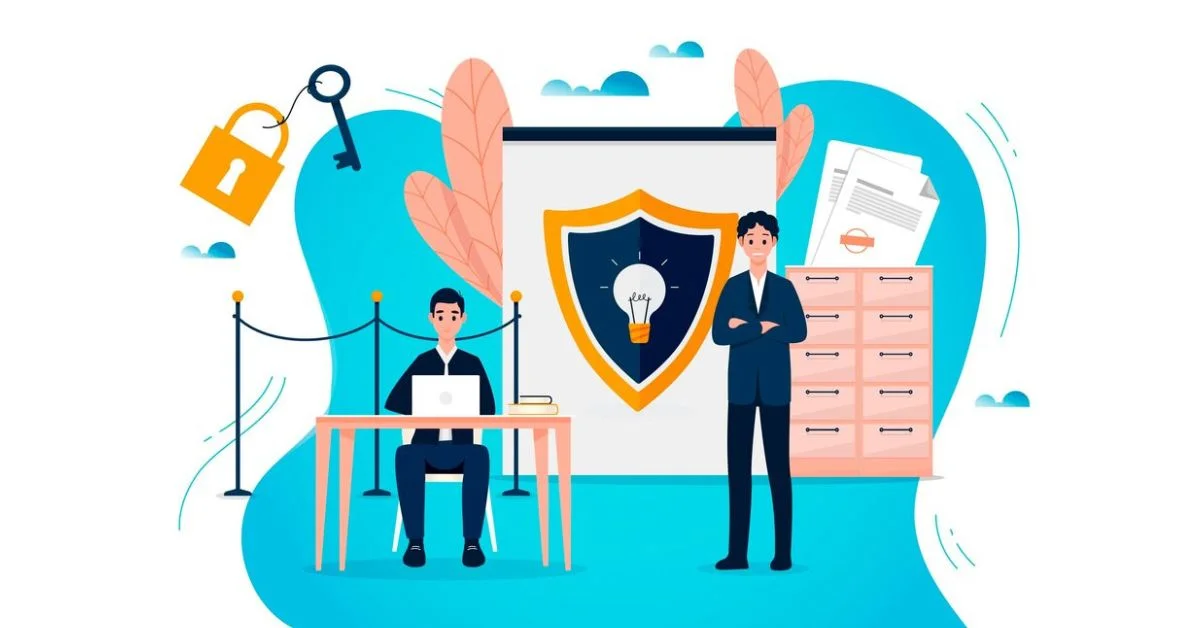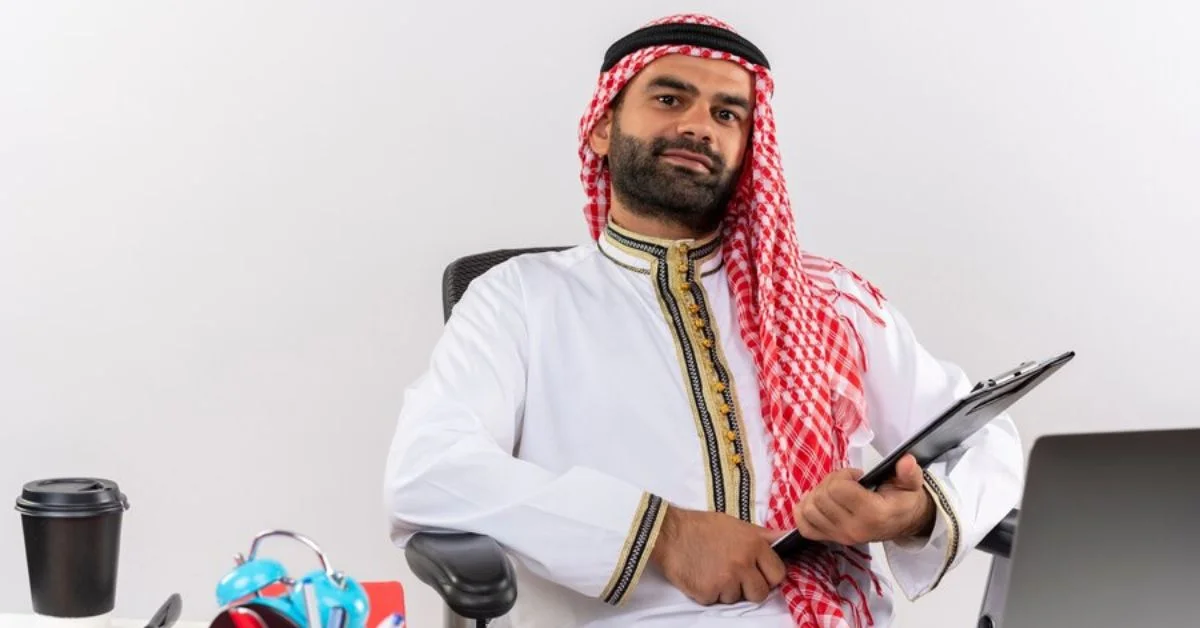EDUCATION
Life-Changing Lessons from the Art World

Introduction to lessons from the art
Art has a unique way of speaking to us. It’s more than just paint on canvas or chiseled stone; it’s a language that transcends barriers and connects cultures. Each masterpiece tells a story, each brushstroke reveals emotion, and every sculpture embodies passion. As we immerse ourselves in the vibrant world of art, we uncover invaluable lessons that can enrich our lives.
Whether you’re an artist yourself or simply an admirer of creativity, there’s much to gain from understanding the messages hidden within these works. Let’s explore some life-changing lessons from the art that inspire us to think differently, push boundaries, and embrace our true selves.
Lessons on creativity and expression from famous artists
Famous artists have long understood the power of creativity. Take Vincent van Gogh, for instance. His bold brush strokes and vivid colors convey deep emotions. He teaches us that raw expression can resonate with others.
Frida Kahlo’s life was full of pain and identity struggles. Yet she transformed her suffering into powerful self-portraits. Her work encourages us to embrace our vulnerabilities as sources of strength.
Then there’s Pablo Picasso, who shattered conventions by experimenting with form and perspective. His journey shows that breaking boundaries often leads to innovation in art—and life.
These artists remind us that creativity isn’t just about technique; it’s a personal journey. Each canvas tells a story shaped by unique experiences, inviting viewers to connect on an emotional level.
Through their lens, we learn that authentic expression holds immense value in a world craving genuine connections.
The power of perseverance and dedication from renowned art pieces
Art is often born from struggle. Many masterpieces reflect the unwavering dedication of their creators. Take Vincent van Gogh, for example. Despite facing mental health challenges and constant rejection, his passion drove him to produce over 2,100 artworks in just a decade.
Then there’s Michelangelo’s Sistine Chapel ceiling. The artist endured physical pain and immense pressure while working on this monumental task for four years. His perseverance resulted in one of history’s greatest artistic achievements.
Even contemporary artists face hurdles. Banksy navigates legal issues and societal pushback yet continues to deliver bold messages through street art. Each brushstroke or spray paint serves as a testament to resilience.
These stories remind us that persistence can transform obstacles into remarkable creations, encouraging us all to embrace our struggles with tenacity and grace.
ALSO READ: www. topicsolutions.net: Your Ultimate Knowledge Hub for 2024
Learning about culture and history through art
Art serves as a powerful lens through which we can explore culture and history. Each brushstroke, sculpture, or photograph tells a story that transcends time.
From ancient cave paintings to contemporary installations, artists reflect the societal values and beliefs of their era. For example, Renaissance masterpieces reveal insights into religious devotion and humanism. Native American crafts convey deep connections to nature and spirituality.
Visiting museums allows us to witness this dialogue firsthand. Exhibits often feature artifacts that represent pivotal moments in history—war, peace, love, and loss. They help us understand the complexities of different cultures.
Moreover, art fosters empathy by inviting us to step into someone else’s shoes. It reminds us that while times change, emotions remain constant across generations. Through these visual narratives, we gain a richer perspective on our shared human experience.
Lessons on self-discovery and personal growth from creating art
Creating art serves as a mirror reflecting our inner selves. Each brushstroke or sculpted form reveals emotions we might not even recognize.
When we engage in artistic expression, we unlock hidden thoughts and feelings. This journey often leads to profound self-discovery. The colors we choose can signify moods, while the themes may echo personal experiences.
Art encourages vulnerability. It invites us to take risks by sharing our creations with others, revealing parts of ourselves that remain tucked away otherwise. Embracing this openness fosters growth and resilience.
As artists navigate their own journeys, they learn about patience and acceptance. Mistakes transform into lessons, teaching us the importance of perseverance in both art and life.
Through these creative processes, individuals cultivate a deeper understanding of who they are—a continuous evolution marked by exploration and authenticity.
ALSO READ: What is elc uga? Everything we need to know
Using art to communicate important messages and spark change
Art has always served as a powerful medium for expression. It transcends language and cultural barriers, allowing artists to convey profound messages.
Think of iconic works like Picasso’s “Guernica.” This painting is not just an aesthetic masterpiece; it vividly captures the horrors of war and human suffering. Such pieces urge society to reflect on its choices.
Street art also plays a vital role in sparking change. Murals can transform dull urban landscapes into canvases that challenge social norms. They engage communities in conversations about justice, equality, and identity.
Even digital platforms are using art to amplify voices. Artists harness social media to share their work globally, igniting movements that drive awareness around critical issues.
Through these artistic expressions, we witness how creativity fuels activism. Each brushstroke or spray can be a call to action—a reminder that art can inspire hope and motivate change in our world.
Conclusion: How we can apply these lessons in our own lives?
Art is more than just a visual experience. It’s a treasure trove of lessons waiting to be uncovered. By embracing the creativity and expression demonstrated by iconic artists, we can elevate our own work and ideas. Their stories remind us that perseverance pays off, inspiring us to chase our passions despite obstacles.
When we explore art, we gain insights into cultures and histories different from our own. This knowledge fosters empathy and understanding in an increasingly diverse world. The act of creating art becomes a journey of self-discovery; each brushstroke reveals something new about ourselves.
Moreover, art serves as a powerful tool for communication. It speaks truths that words sometimes fail to convey, igniting change within communities.
By applying these profound lessons from the art world in our daily lives, we embrace creativity with open arms. We cultivate resilience when faced with challenges while continually seeking personal growth through exploration and reflection. Art encourages dialogue—both with ourselves and others—and reminds us of the beauty inherent in human expression.
Let these lessons inspire your life choices today!
ALSO READ: What is zybooks? Everything we need to know
FAQs
What is “Lessons from the Art”?
“Lessons from the Art” refers to the valuable insights we gain from exploring art, including creativity, perseverance, cultural understanding, self-discovery, and the power of communication. These lessons can inspire personal growth and transformation.
How does art teach us about perseverance?
Art teaches perseverance by showing how artists overcome challenges. Figures like Vincent van Gogh and Michelangelo faced hardships but pushed through, creating masterpieces that demonstrate the power of dedication.
What can we learn from art about culture and history?
Art serves as a window into different cultures and historical periods, helping us understand societal values, human emotions, and pivotal moments in history, fostering empathy and a deeper understanding of our shared human experience.
How does creating art lead to self-discovery?
Creating art helps uncover hidden emotions and personal experiences, guiding individuals on a journey of self-reflection, vulnerability, and growth. It encourages risk-taking and teaches valuable lessons about patience and perseverance.
Can art spark social change?
Yes, art has the power to communicate important messages and inspire change. Iconic pieces like Picasso’s “Guernica” and street art spark conversation and challenge societal norms, using creativity to ignite awareness and action on critical issues.
EDUCATION
Inside the Scrubs: Nurse’s Journey

Nursing is a dynamic and rewarding profession that demands a great deal of compassion, technical skill, and resilience. Every day, nurses face challenges ranging from managing patient care to keeping up with rapid advancements in medical technology. An integral step in this journey is passing the National Council Licensure Examination (NCLEX), a pivotal exam that assesses a nurse’s readiness to practice safely and effectively.
The Path to Becoming a Nurse
To embark on a nursing career, individuals must first complete an educational program suited to their career goals. Options include a diploma in nursing, an Associate Degree in Nursing (ADN), or a Bachelor of Science in Nursing (BSN).
Each pathway offers a unique blend of practical training and theoretical knowledge. For those aiming for a comprehensive education with better long-term career prospects, a BSN is advisable, as it opens doors to advanced practice roles and higher earning potential.
The NCLEX is crucial for obtaining licensure as a registered nurse (RN) or licensed practical nurse (LPN). This exam tests candidates on their knowledge and ability to make sound clinical judgments in various healthcare scenarios. Using NCLEX exam questions during study preparation can help candidates familiarize themselves with the types of scenarios they may encounter. The latest updates to the NCLEX focus on enhancing the assessment of clinical judgment skills, ensuring that nurses are well-prepared to meet the demands of modern healthcare settings.
Daily Life of a Nurse
Nurses often begin their day by checking patient charts and planning care routines. Depending on their workplace, such as a hospital, clinic, or community center, the specifics of these routines can vary significantly. Tasks typically include administering medications, collaborating with other healthcare professionals, and providing direct patient care through assessments and treatments.
Nursing can be physically demanding and emotionally draining, often requiring long hours and the ability to manage high-stress situations. However, the profession is also incredibly rewarding, offering the chance to make a significant impact on patients’ lives daily. Nurses often cite the personal connections with patients and the satisfaction of knowing they are making a difference as key rewards of their profession.
Key Skills and Qualities of Successful Nurses
Successful nurses embody a mix of hard and soft skills that enable them to handle the diverse demands of the healthcare field effectively.
Essential Skills
- Clinical Competence: Proficient in performing medical procedures and delivering patient care based on the latest health standards.
- Critical Thinking: Ability to make quick, informed decisions regarding patient care.
- Communication: Strong verbal and written skills for effective interaction with patients, families, and healthcare teams.
Personal Qualities
- Compassion: A deep empathy for patients and their conditions.
- Resilience: The strength to cope with challenging situations and emotional stress.
- Adaptability: Flexibility in handling the unpredictable nature of healthcare settings.
Advancement and Specialization Opportunities
Nurses have vast opportunities to advance their careers by specializing in different fields of medicine. Specialties like pediatrics, oncology, geriatrics, and critical care require specific skills and knowledge that are typically gained through further education and clinical experience.
Continuing Education and Certifications
Continuing education is crucial for nurses looking to advance in their careers. Additional certifications in areas such as acute care, anesthesia, or family practice not only expand a nurse’s skill set but also improve their career prospects and potential earnings.
Nurses have access to a wide array of resources that support their professional growth and well-being. Organizations such as the American Nurses Association (ANA) and the National League for Nursing offer networking opportunities, professional development, advocacy, and up-to-date industry information.
Many institutions and professional bodies offer courses that help nurses stay current with medical advancements and maintain licensure.
Support from colleagues through mentorship programs and online communities can provide emotional backing and career guidance.
NCLEX Preparation Resources
Free NCLEX practice tests are invaluable resources for graduates preparing for licensure. Websites like MedicalHero.com offer practice questions and simulations that mimic the format and rigor of the actual exam. By leveraging these skills, opportunities, and resources, nurses can not only thrive in their current roles but also pave the way for future advancements in their careers.
LAW
Strategic Trust Planning for Fortified Asset Protection

Table of Contents
- Key Takeaways
- Comprehensive Overview of Asset Protection Trusts
- Deciphering the Legal Framework Surrounding Trusts
- Best Practices for Establishing Trusts
- Selecting the Right Assets for Your Trust
- Additional Advantages of Trust Formation
- Navigating the Considerations and Limitations of Trusts
- Why Professional Advice is Critical in Trust Management
- The Lasting Significance of Trusts in Asset Management
Key Takeaways
- Trusts are practical tools for creating a barrier against creditors and safeguarding your assets.
- Tailoring your trust according to state-specific laws and asset types is necessary for it to serve its purpose fully.
- While trusts provide numerous benefits, they also have certain restrictions that must be prudently evaluated.
- Professional legal and financial advice is paramount in navigating the complexities inherent in trust management.
Comprehensive Overview of Asset Protection Trusts
Domestic Asset Protection Trusts strike a balance between asset protection and flexible control. Adequate asset protection is proactive and comprehensive. A solid plan can ensure that assets remain secure under the trust’s guidelines. Robust asset protection strategies integrated with estate planning goals can achieve comprehensive security for financial legacies.
Deciphering the Legal Framework Surrounding Trusts
Trusts are legal arrangements that protect assets. To be effective, they must comply with complex laws that vary across states and change over time. A trustee with expertise and integrity plays a critical role in managing trusts, balancing compliance with legal requirements, and managing assets. The most important thing is that the trustee’s actions aim to preserve and enhance the value of the trust assets for the beneficiaries.
Best Practices for Establishing Trusts
Building trust requires a personalized approach considering an individual’s financial situation and goals. Choosing the right trust and accurately funding it is crucial for its effectiveness. Trusts must adhere to legal standards and be executed correctly, requiring the guidance of legal professionals. Mistakes in the trust creation process can have severe consequences, emphasizing the need for thorough preparation and compliance with legal requirements.
Selecting the Right Assets for Your Trust
A customized strategy is required to protect various assets through a trust. This strategy should cater to the specific protection needs of each asset type. Transferring assets into a trust should be approached carefully to ensure adequate protection within the trust’s structure.
Additional Advantages of Trust Formation
Trusts offer advantages for financial and estate planning. They protect assets, minimize estate taxes, maintain family privacy, and control wealth distribution. Trusts provide peace of mind by reducing administrative burden and ensuring that the legacy left behind reflects the grantor’s intentions for their family’s future.
Navigating the Considerations and Limitations of Trusts
Trusts offer benefits but also have limitations. Laws restrict access and control over trust assets, which may be challenging for those used to manage assets directly. Trusts may have stipulations on distributions, investments, and beneficiary rights, which should align with the grantor’s goals. Irrevocable trusts offer protection but require the grantor to relinquish control over assets. Finding the right balance between power and safety is crucial when considering an irrevocable trust as part of an asset protection strategy.
Why Professional Advice is Critical in Trust Management
Trust law is complex and requires expert guidance for trusts and estate planning. Professionals in this field ensure compliance with legal statutes, protect assets, and meet wealth management goals. Their advice is essential for drafting the trust document, selecting a trustworthy trustee, and strategically funding the trust.
The Lasting Significance of Trusts in Asset Management
Trusts are essential for wealth preservation and estate planning. Domestic Asset Protection Trusts provide specialized security for individual needs and long-term objectives. Trusts offer a regulated structure for managing wealth with foresight and intention. Although complex, a well-devised trust strategy can be highly beneficial. Professional expertise and strategic planning can turn trusts into a cornerstone of financial resilience and legacy building.
LAW
A detailed guide on Tax refund for tourists’ schemes in the UAE

While staying in the UAE, tourists have the opportunity to claim a refund on the Value Added Tax (VAT) for goods they purchase. This initiative was elucidated by the Federal Tax Authority in 2018. This article serves as a detailed guide on the VAT refund schemes available to tourists in the UAE.
Whether you are a visitor exploring the country or delving into business and career prospects, seeking assistance from VAT Registration UAE’s tax experts is always advisable. The VAT refund process for tourists in the UAE operates through an electronic system, which was established following the implementation of VAT by the FTA.
It is important to note that this refund scheme solely pertains to traders registered under the “Tax Refund for Tourists Scheme.” Only those affiliated with this scheme are eligible to receive VAT refunds. Understanding the procedure for claiming a VAT refund for tourists in the UAE, as well as how travellers can retrieve VAT payments from their accounts, is essential.
The implementation of the tax refund for tourists in the UAE
The tax refund system for tourists in the UAE is subject to particular conditions that dictate when and how refunds can be claimed. These conditions outline the eligibility criteria and important dates for refund requests:
- The retailers participating in the Scheme will be required to initiate refund claims to tourists as of 18th November 2018.
- The overseas tourists can claim their VAT refunds at Abu Dhabi International Airport, Sharjah International Airport or Dubai International Airport as of 18th November 2018.
- Lastly, overseas tourists also have the option to claim their VAT refunds at the land ports and seaports, applicable as of 16th December 2018.
Purchase procedures applicable for VAT refund for tourist schemes in the UAE
The purchase procedure is as follows when a customer intends to purchase from the retailer under the tax refund for tourist schemes:
- Whenever a retailer gets a purchase request from a tourist under the tourist refund scheme, the retailer must perform a check for the following eligibilities: –
- According to clause 3 of Article 68 of the Cabinet Decision No. 52 of 2017 referred thereto, the client is an Overseas Tourist who was present in the State at the time of the Goods purchase and who is present at the retail establishment with purchase receipts.
- When asking for a refund claim form to be issued. The retailer should also ensure that the supply of goods was made within 90 days, not exceeding 90 days from when the issuance of refund documents was requested.
2. The customer and purchase details must be maintained per the details specified by the FTA and the Operator.
3. The required documents must be issued to the customer to claim their VAT refund on exporting the goods.
4. Depending upon the requirement of some goods and their categories, the retailer must ensure that the goods are packed well to ensure smooth handling and delivery to the customer in their home country.
5. Any other conditions, if the retailer should also meet any, to ensure accordance with the agreement approved by the retailer for providing a tax tax-free purchase service.
For any further queries relating to the purchase requirements for tax refunds for tourist schemes in the UAE, you must contact the tax consultant in dubai for their invaluable guidance and support.
Export procedures to be adhered to by the operators for tax refunds for tourist schemes in the UAE
The operators of the tax refund schemes for tourists must ensure that the tourists claiming the refund are for the goods that have been exported within 90 days from the date of supply. If not, then the refund claims must be rejected. He is also supposed to verify that the exported goods and the refund claim align with the criteria the authority agreed upon. Also, if the authority has consented, the Operator can appoint a third party to verify on his behalf. VAT consultants in the UAE are always for any assistance at your service.
Applicable fees and refunds under the tax refund for tourist schemes in the UAE
The authority has been allowed to charge a service fee to the overseas customers as follows-
- An administrative fee of 15% of the total VAT refund amount claimed.
- A fixed fee of AED 4.80 per refund claim.
The Operator can also deduct the fee from the amount that the overseas tourist is supposed to get back as a refund from the FTA. The point to note here is that the cash VAT refund amount will have a cap of AED 10,000 per tourist per day (24 hours).
Also, When an Overseas Tourist claims a refund from a Taxable Person, the tax will not be reimbursed under the Scheme for any claim if the value of the tax-inclusive purchases made from that Taxable Person is not AED 250 or higher.
Any doubts related to fees can be clarified through VAT consultants in the UAE.
Goods that do not fall under the tax refund schemes in the UAE
The following goods are not included in the refund scheme for tourists in the UAE
- The goods or items not carried by the tourists when they leave the country.
- The goods that have been consumed fully or partially in the state of any other implementing state.
- Motor vehicles, aircraft and boats.
Considering the above points, the tourist tax refund guide might look complicated to the visitors. Therefore, they must find some tax consultants in the UAE who can help them solve their queries and guide them in claiming their refund. They will also help you identify the goods eligible for tax refunds under this Scheme.
Engage the Expert Services of VAT Registration UAE
The tax consultants and VAT experts in the UAE, accessible through VAT registration UAE, stand ready to assist you in claiming VAT refunds should you decide to depart the UAE following your vacation. Reach out to us today to gain clarity on the VAT refund process in the UAE, including how tourists can seek refunds on purchases made during their stay. Thus, contact us today and we shall be glad to assist you.

 TECHNOLOGY4 months ago
TECHNOLOGY4 months agoBlog Arcy Art: Where Architecture Meets Art

 ENTERTAINMENT2 weeks ago
ENTERTAINMENT2 weeks agoExploring the Kristen Archives: A Treasure Trove of Erotica and More

 LIFESTYLE4 months ago
LIFESTYLE4 months agoThe Disciplinary Wives Club: Spanking for Love, Not Punishment

 LIFESTYLE2 weeks ago
LIFESTYLE2 weeks agoWho Is Sandra Orlow?

 GENERAL3 days ago
GENERAL3 days ago5 Factors That Affect Tattoo Removal Success

 ENTERTAINMENT8 months ago
ENTERTAINMENT8 months agoYuppow: Your Free Source for Movies and TV Shows

 ENTERTAINMENT1 week ago
ENTERTAINMENT1 week agoKiss KH: The Streaming Platform Redefining Digital Engagement and Cultural Currents

 HOME IMPROVEMENT5 days ago
HOME IMPROVEMENT5 days agoGet Your Grout to Gleam With These Easy-To-Follow Tips












